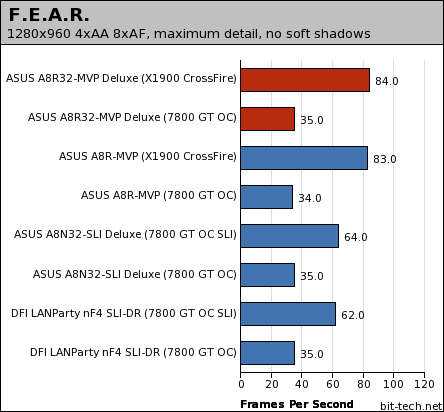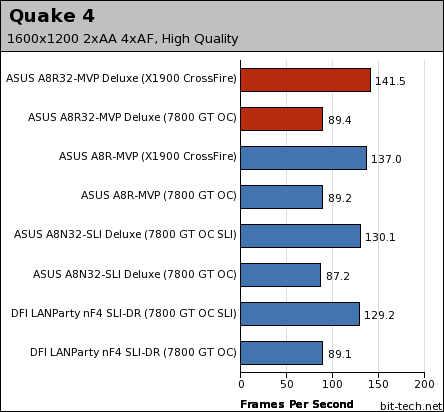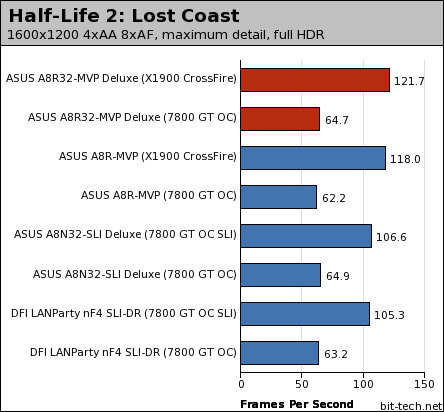Gaming Performance - 2:
First off, we can't directly compare the dual card performance of ATI's RD580 chipset with NVIDIA's nForce4 SLI x16, because the GPUs are in a different class. However, we can get some idea of how efficient each architecture is when it comes to the difference between two PCI-Express x8 slots and two PCI-Express x16 slots.
The ASUS A8R-MVP was the slowest board in single card mode, while the other three boards all performed the same, returning a 35 frame per second average frame rate.

There was a four and a half frame per second performance incresae between RD480 and RD580 when using two Radeon X1900's in CrossFire mode. Meanwhile, the difference between nForce4 SLI and nForce4 SLI X16 was a mere one frame per second. We understand that the larger performance increases come from using the likes of SuperAA and SLI AA - we'll update our numbers with some additional game testing with these antialiasing modes later this week.

The ASUS A8N32-SLI Deluxe was slightly faster than the CrossFire Xpress 3200-based A8R32-MVP when using a single GeForce 7800 GT OC. However, we're talking about less than a 0.5 frames per second difference between the two boards. Interestingly, the dual x8 cards were both slower than their dual x16 siblings.

MSI MPG Velox 100R Chassis Review
October 14 2021 | 15:04






Want to comment? Please log in.